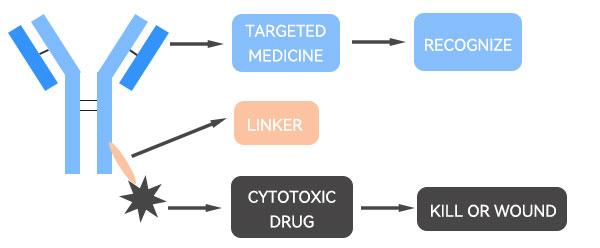GLP-1
GLP-1, known as glucagon-like peptide-1, is a hormone secreted by intestinal cells that is rapidly released after a meal to stimulate the secretion of insulin from pancreatic β-cells, thus lowering blood glucose.
The production and preparation of GLP-1 drugs, which are peptide drugs consisting of multiple amino acids linked by peptide chains, is a complex process. They are divided into two categories: bio-fermentation synthesis and chemical synthesis.Bio-fermentation synthesis expresses inclusion bodies through E. coli or yeast fermentation, followed by a series of steps such as harvesting, breaking, denaturing, and clarification.Chemical synthesis adds amino acids to the growing peptide chain one by one through solid or liquid phase synthesis techniques.Either method ultimately requires process steps such as chromatography and UF to purify and adjust the concentration of the drug.

ADC
Antibody-drug conjugate(ADC), a humanized or humanized monoclonal antibody coupled to a highly cytotoxic small molecule (payload) via a chemical junction, is a novel form of therapy with scope for development in cancer chemotherapy.
The conjugation method is a critical factor influencing the drug-to-antibody ratio (DAR) of small-molecule toxins. Only by selecting an appropriate conjugation technology can the toxin be uniformly and stably attached to the antibody in an ADC. Currently, there are three primary conjugation methods: conjugation via lysine residues exposed on the antibody surface, conjugation via cysteine residues that form reduced interchain disulfide bonds, and site-specific conjugation technology.

